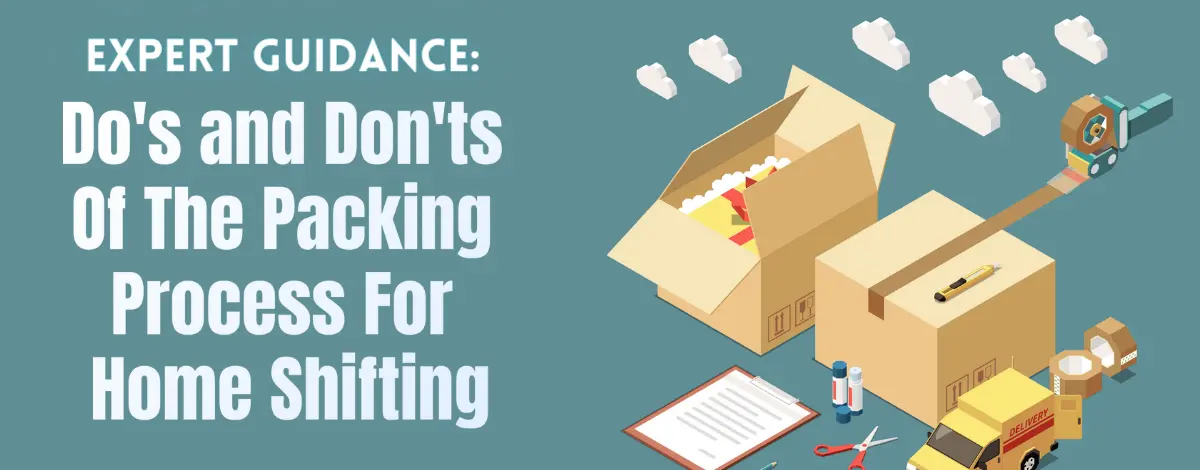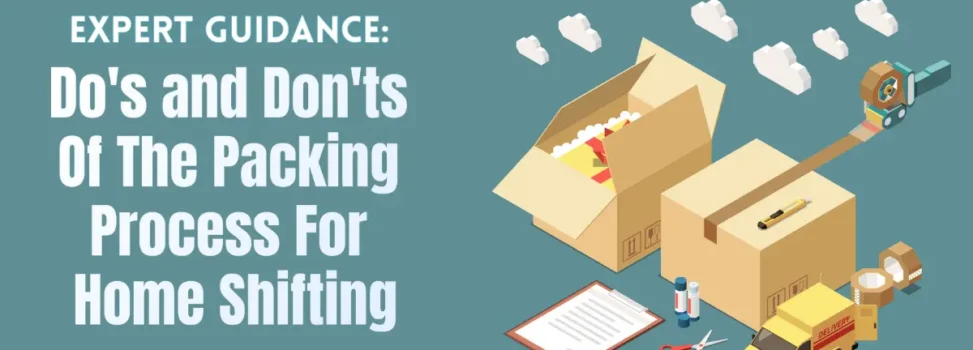It can be very difficult to decide the most effective way to pack in advance of a relocation. Concerning how much stuff you have, you could find it tempting to put things off.
However, the day of your relocation is not the best time to pack everything you own—especially if you’re unsure of the packing process.
Read the article to learn the do’s and don’ts of packing before your relocation when you’re not sure how to begin.
Do’s of the packing process:
Regardless of your shifting strategy, packing oneself is an excellent option if you’re not employing packers.
Proper packing is just as crucial. Doing this will decrease the likelihood of any mishaps or losses during your journey.
Following are the top packing suggestions to help you avoid wasting time or breaking valuables when packing for the moving process.
1. Put your garments in a suitcase and fold or vacuum-seal them:
Movers can move almost anything that is not against the law or in imminent danger. You’re fortunate because it contains suitcases and baggage!
Whenever you move, take out your luggage bags and utilize them to pack fresh apparel, rather than stressing over what you need to accomplish with the clothes you already have.
This is an excellent technique to safeguard any brittle, embellished, dotted, vulnerable, or pricey cloth, as your suitcase is considerably more secure than a box.
You can add a vacuum-sealer bag system to your baggage. It allows you to fit even more clothes inside.
When moving, don’t forget to take off any luggage labels or fasteners that you can grab.
2. Sort Boxes by Color and Designate Separate Rooms:
Coloring your boxes, with the help of a vibrant lasting marker, bright tape, or your child’s school paint, will expedite your relocation. Boxes with colored labels indicate where they should go, which makes moving simpler and more quickly for movers.
You can step it up an additional step by adding numbers to the boxes according to the rooms you wish them in at your new location.
Then, labeling the rooms with the corresponding box numbers using a wall-safe adhesive or sticky label after that is a good idea.
3. Pack the lamps by disassembling them:
You can pay movers to disassemble your lamp. It will be a good idea.
If you disassemble the lamp by yourself and cover any intricate goods, such as lamps with detachable parts, well in advance of your movers’ arrival, your move will proceed a lot quicker.
4. Pictures’ packing method through adding cushioning:
Use packing paper, bubble wrap, or extra cushioning to shield all of your pictures.
Pack pricey paintings in cartons—specifically, picture/TV boxes, which are available at most interior design stores as well as transportation material stores.
5. Electronic packing method:
Since electronics can be pricey, it’s crucial to pack all of them properly to prevent any unnecessary damage.
After removing all of the cords, tape them to the original objects. This will lessen the chance of misplacing crucial cables.
Ensure that all transportation screws are secure! If possible, store them in their original boxes; if not, securely pack them in sturdy boxes.
You should cover electronic items like TVs with extra padding. It will secure them during transportation.
Make a way for your Movers to walk:
So you’ve already packed and are all set to go? Fantastic! Making a path clean for your professionals to work in is something that you should do before they come.
Don’ts of the packing process:
If you pack incorrectly, your move may go more slowly than usual.
Proper preparation, supplies, or methods can prevent harm caused by inadequate packaging.
1. Place open boxes nearby:
Expert movers don’t store open boxes in their vehicles where belongings can tumble out and break or lose, or injure other belongings in your possession. Furthermore, not every professional mover has received training in safe packing methods. (At 1Support, we offer moving companies with workers who are taught to pack correctly; nonetheless, you should inquire about the policies of your chosen business.)
2. Using Low-End, Fragile Packaging Materials and Boxes:
While lowering moving expenses must be everyone’s aim, do not use inexpensive packing supplies at any cost.
Poor boxes can cause breakage and delay your relocation, in addition to being a bigger challenge for packers and movers to deal with.
Assuming you are packing alone, be sure to have the appropriate kind of boxes. While grocery store boxes may work well for food storage, they will not be able to withstand the demanding task of transferring larger objects.
Also, large or costly items shouldn’t be placed in flimsy boxes! Whenever the box is raised, the content usually tumbles out the bottom or gets hammered by a factor hefty from the top.
3. Packing Using Bags Rather Than Boxes:
Moving boxes should not be replaced with bags for the protection of your belongings during transit.
Anything that fits in a bag ought to be put in a box, except cushions.
Moreover, moving boxes cannot be stacked with bags. The optimal loading technique for movers involves carefully stacking boxes to optimize space and prevent objects from toppling or jostling within the vehicle.
Packing is an art. If you do not focus on it, the result will not be as much as you think. Here we have given you where to start and what to avoid in your packing process.
If done correctly, packing before moving may save you a great deal of labor and anxiety matter. No need to point out how happy your movers will be to see you so well-organized and set to go.
Your moving journey will be the most seamless and simplest ever if you use these ideas to pack ahead of time.
Whatever packing needs, contact 1Support to get the best packers.
FAQs – Expert Guidance: Do’s and Don’ts of the Packing Process
The day of your relocation is not the best time to pack everything you own. Proper packing is just as important. Doing this in advance of a relocation will decrease the likelihood of any mishaps or losses during your journey.
1. Packing clothes in suitcases or vacuum-sealed bags to protect delicate or expensive fabrics.
2. Sorting boxes by color and designating separate rooms for easier organization and unpacking.
3. Disassembling lamps and providing cushioning for pictures to prevent damage during transit.
4. Properly packing electronics, including securing cords and using extra padding for protection.
5. Ensuring there is a clear path for movers to work in before they arrive.
1. Placing open boxes nearby where belongings could fall out and cause damage or injury.
2. Using low-end, fragile packaging materials and boxes that may lead to breakage and delays during the move.
3. Packing items using bags instead of boxes, as bags do not provide adequate protection during transit and cannot be stacked efficiently.
They can lead to several problems:
1. Breakage: you cannot give protection to fragile items, so they may get broken during transit if you pack them in low-quality materials.
2. Delays: Breakage or damage caused by inadequate packaging may result in delays during the move. You may need to face delay due to repacking or replacement.
3. Safety concerns: Fragile items that are not properly packed can pose a safety risk to both movers and belongings. It may lead to accidents or injuries during the move.


